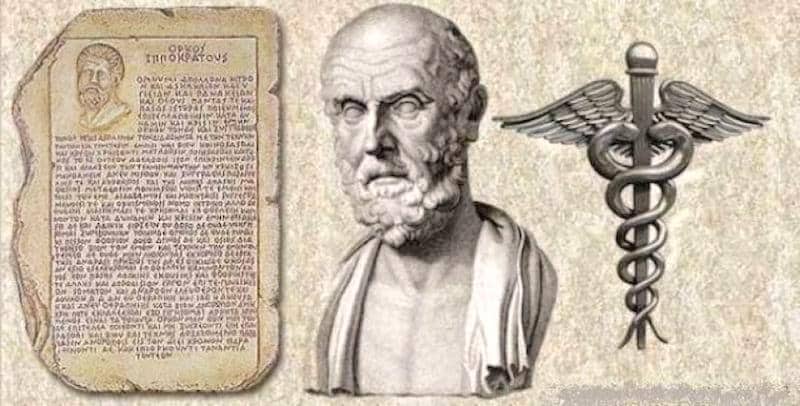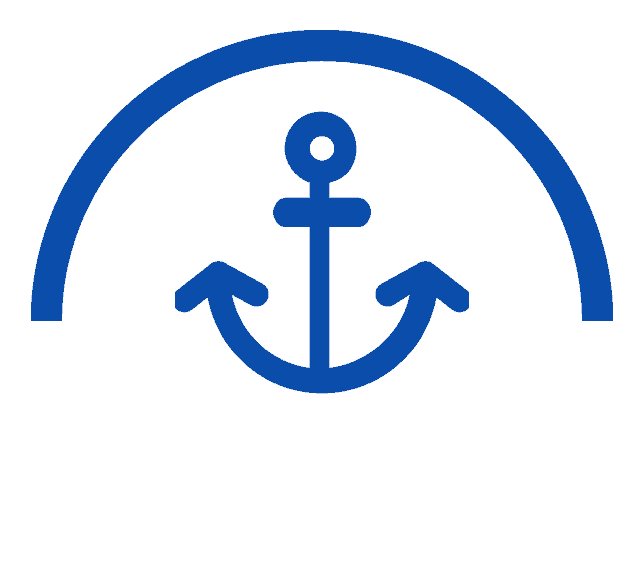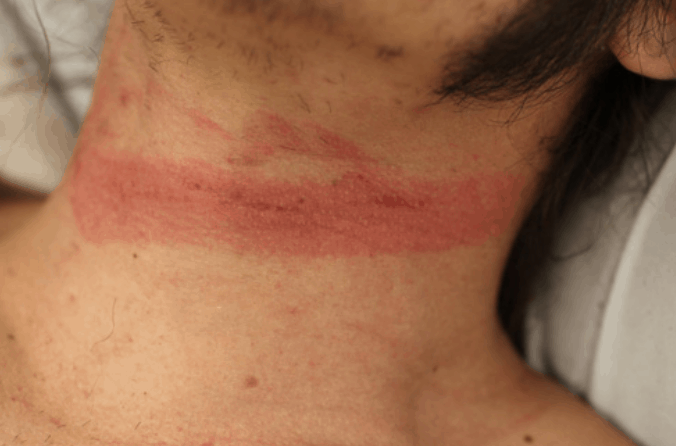A 4 year old boy is brought to the Emergency Department with a one day history of vomiting and diarrhoea. You estimate a moderate level of dehydration. He weighs 15kg. The maintenance amount and deficit loss is most closely approximated by:
(a) 750ml
(b) 1750ml
(c) 2050ml
(d) 3000ml
Answer
When correcting fluid losses in children, we need to replace:
Initial deficit
Maintenance
Ongoing losses
The ongoing losses can be easily calculated from measuring what is being lost.
The Maintenance fluids are similarly very simple to calculate:
kg 24 hour
<10 100 mL/kg
10–20 1000+ 50mL/kg above 10kg
>20 1500 + 20mL/kg above 20kg
Clinical Derivation of degree of dehydration is inaccurate. The best method is to look at the weight loss of the child, although this may not be available prior to presentation. The method we therefore use is a combination.
Firstly determine the degree of dehydration clinically:
Mild Dehydration is usually not discernible
Moderate Dehydration is described as 4-6%. There is usually delayed capillary refill (>2 sec) and increased reap rate.
Severe Dehydration is > 7%. Cap refill is > 3 sec, skin is mottled and patient is tachycardic
Calculating Water Deficit
If the patient weighs 10kg and is moderately dehydrated ie., 5% dehydrated, then the deficit is:
5/100 x 10 =0.5 in Litres ie 500ml
What Fluids to Use?
Initial resuscitation boluses of 20ml/kg of normal saline can be used.
For maintenance IV fluid 5% dextrose and 0.9% Normal Saline can be used, remembering to correct potassium.
For oral rehydration Gastrolyte and similar products may be used.
How quickly to rehydrate.
In a resuscitation situation, obviously fluids will be given quickly. In other situations they can be replaced at slower rates. Some literature recommends replacing 50% of the deficit within the first 8 hours and then the remaining 50% over the next 16 hours.
In conditions such as gastroenteritis fluid may be replaced rapidly i.e.., over hours. In nasogatric fluid resuscitation 25ml/kg per hour can be replaced foe the firs 4 hours, i.e.., in a 10kg child one litre can be given over 4 hours.
BEWARE Rapid fluid resuscitation in DKA as cerebral oedema may occur. Please read the blog on DKA and Cerebral Oedema.
Watch the Video on FLUID RESUSCITATION IN CHILDREN
In a 4 year old who weighs 15 kg and has a moderate level of dehydration secondary to gastroenteritis, the fluid deficit should be replaced:
(a) within an hour
(b) within 48 hours
(c) via nasogastric tube
(d) via large bore intravenous canullae
Answer
A one year old boy is brought to the Emergency Department with a 3 day history of rhinorrhoea, wheeze, fever and cough. The most likely diagnosis is:
(a) asthma
(b) bronchiolitis
(c) influenza
(d) pertussis infection
Answer
Bronchiolitis
Usually occurs in < 2 yo
Caused : Respiratory Syncytial Virus
Presentation
Fever, cough rhinorrhoea and wheeze. Worst at day 3. Plateaus after this. May affect feeding.
Severity
Mild: feeding and sats >93%
Moderate: Increased work of breathing, chest wall retractions, sats 90-93, feeding affected
Severe: lethargy, can’t feed. chest wall retraction. Sats < 90%
Disposition
Admit all except mild
Controversies
Bronchodilators don’t alter the course, but if a child is > 8months can consider a dose in case 1st episode of asthma.
There is no benefit in antivirals
Steroids are of no real practical benefit- study showed some minor benefit when combination of high dose dexamethasone and adrenaline were used.
Antibiotics have no role unless there is a complication of other infection
Not So Controversial
Nebulised hypertonic saline can decrease mucus production
Patients with decreased feeding may need fluids
More ICU but Heliox may delay or avoid need for intubation
Situations that may make the condition more severe
< 6 weeks old
ex-premature
congenital heart disease
neurological conditions
pulmonary hypertension
chronic respiratory conditions
In deciding to admit a child with bronchiolitis, what would affect your decision most?
(a) sats of 94%
(b) 4 weeks of age
(c) 3 day duration of illness
(d) absent chest wall retraction
Answer
Treatment for bronchiolitis in a one year old, can include:
(a) Ribuvirin
(b) dexamethazone
(c) salbutamol
(d) antibiotics
Answer
An 18 month old is brought to the Emergency Department with a diagnosis of croup. Which of the following is correct?
(a) stridor does not occur in mild cases
(b) Inspiratory stridor is present
(c) salbutamol decreases hospital length of stay
(d) children receiving nebuliser adrenaline must be admnitted
Answer
(b)
Age: Usually < 2yo but may occur later also
Cause: Parainfluenza
Presentation: Inspiratory stridor, Barking Cough, may have wheeze and may have had a recent URTI
Severity
Mild: cough and stridor on exertion
Moderate: cough and stridor at rest and increased risk of breathing
Severe: irritable, unable to talk, increased work of breathing
BEWARE: Hypoxaemia is a late sign
Investigations: None
Treatment
Minimal handling
Steroids can be used for all cases. Simple single dose dexamethasone 0.15mg/kg
Nebulised adrenaline can be given in severe cases, with increased dose of dexamethasone i.e.., 0.6mg/kg IV/IM
Disposition
Home if well 4 hours post nebuliser adrenaline or 1 hour post steroids.
In a child with suspected measles infection:
(a) cough is a rare presenting symptom
(b) Koplick’s spots precede the rash
(c) IgM antibody is positive for up to 7 days
(d) pneumonia can occur and is self limiting
Answer
(b)
Cause: RNA myxovirus
Presentation: Fever, coryza, conjunctivitis. Cough occurs in most cases. A rash spreads from the head and neck at about day 3. It is maculopapular.
Koplick’s Spots are pathognomonic of the condition. They precede the rash by 24 hours and are usually white on a red background.
Investigations: IgM Antibody may be negative for up to 4 days, but remains positive for up to 3 months. It peaks at 7-10 days after the rash appears.
Complications
Otitis Media: This is a common complication
Pneumonia: Occurs in about 4% of cases and is responsible for 50% of deaths.
Encephalitis: Symptoms of headache, dizziness and vomiting occur 1-2 weeks post the disease
SSPE:Subacute Sclerosing Pan encephalitis: Occurs in 1:25000 and may occur up to 10 years after the original exposure. This condition is associated with a progressive mental deterioration and has a 100% mortality.
Myocarditis
Nephritis
Treatment: no antibiotics unless complicating infections. Immunoglobulin should be given within 7 days of exposure to those non- immunised.
A 5 year old boy has been brought into the emergency department following a 10 minute convulsion. He has had a two day history of coryzal symptoms and fevers. He is now alert and happy and looks well.
(a) febrile convulsions occur in about 40% of febrile children
(b) 5 years of age is not a typical age for a febrile convulsion
(c) a 10 minute seizure indicates the need for further investigation
(d) investigations are not indicated if the focus of infection is identified
Answer
(d)
Age: 6 to 6 ie 6 months to 6 years
These are benign if they last for less than 15 minutes and they do not recur in the same illness.
Occur in 3% of children.
Simple febrile convulsions do not predispose to epilepsy. The risk in those children is 1% i.e.., same as the population.
Febrile Convulsions are considered complex if:
have focal features
last more than 15 minutes
recur in the same illness
if the patient hasn’t totally recovered within an hour.
Investigations
If a focus has been found no need to investigate. Need to retying the < 6month old, as there may be a CNS infection and they need a full septic workup including lumbar puncture.
A three year old boy appears toxic and presents with a one week history of fever. He has progressively not been able to eat and is now drooling, has hyper-extension of the neck, looks like he has torticolis and has stridor. The most likely diagnosis is :
(a) epiglottitis
(b) retropharyngeal abscess
(c) foreign body in the lung
(d) quinsy
Answer
(b)
In occurs in 6months to 4 years of age.
Patients present with: fever, drooling, dysphagia, inspiratory stridor and may hold their head in a torticollis-like position.
If the abscess ruptures, it may result in rapid and fatal airway obstruction. Other complications include, aspiration pneumonia, mediastinitis, and erosion into the jugular vein and carotid artery.
DO NOT palpate as may cause the abscess to rupture.
Investigation is by CT neck with contrast. Plain Xray shows widening of the retropharyngeal space.Usually on plain Xray there is an increase in the retropharyngeal space i.e.., so it is 2x the diameter of the vertebral body at C2, or greater than one half the width of C4
Treatment: Antibiotics:
ampicillin/sulbactam and consider cetriaxone.
IV dexamethasone 0.15-0.6mg/kg
In a three year old with stridor, the causes could include:
(a) croup, epiglottitis, asthma, retropharyngeal abscess, foreign body,
(b) epiglottitis, foreign body, trauma, asthma, retropharyngeal abscess
(c) trauma, croup, retropharyngeal abscess, foreign body
(d) asthma, croup, bronchiolitis, trauma




